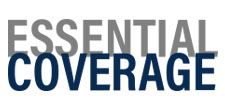
The late, great Princeton economist Uwe Reinhardt once said that the system for determining prices in the US health care system was “chaos behind a veil of secrecy.” That was in 2006, and clearly, the chaos persists today: In San Francisco, the price for a basic blood test ranges from $80 to $564; in Los Angeles, $12 to $413; and in Portland, $15 to $44.
Why does the price of one of the most common tests in medicine vary so much? Multiple factors like the bargaining power of insurers, provider consolidation, and underlying economic conditions  may explain some of the differences, but the veil shrouding these striking price discrepancies has yet to be completely lifted.
may explain some of the differences, but the veil shrouding these striking price discrepancies has yet to be completely lifted.
Margot Sanger-Katz writes in the New York Times that health care prices are still hard to uncover because hospitals and insurers set them behind closed doors, and some claim those prices are legally protected trade secrets. She looked at a new analysis by the Health Care Cost Institute (HCCI) that found “enormous swings in price for identical services are common in health care.” To compile the pricing data, HCCI had to pool de-identified health insurance claims submitted to three large insurance companies. “Even the institute can’t say which insurers and providers are attached to the different prices, and it has eliminated certain markets with less competition where it might be easy to guess,” Sanger-Katz writes.
Price transparency is slowly becoming more prevalent. A few online tools exist that allow the public to estimate the price of some medical procedures. The FAIR Health consumer tool has a five-step process for looking up in-network and out-of-network prices for procedures based on a patient’s location. Healthcare Bluebook has a consumer search tool for price information. And HCCI runs guroo.com, a national and regional-level tool that provides average prices for bundles of health care services.
Government Efforts to Make Prices More Transparent
Federal and state policies are starting to complement these efforts. On January 1, 2019, a new national health care transparency policy took effect. The federal government now requires hospitals to post their price lists, called chargemasters, online in a format that can be easily processed by a computer. Critics of the regulation say that chargemasters are virtually incomprehensible to patients, and Vox journalist Sarah Kliff points out that they only lay out the list prices that hospitals charge for services, not the negotiated prices that insurers actually pay. However, the policy still takes the health care system one step closer to being transparent about costs.
In California, work continues on the creation of a new statewide Healthcare Payments Database. Once completed, the database could provide policymakers, patients, and the public with greater insight into the prices charged for medical services. A review committee comprised of health care stakeholders and experts is advising California’s Office of Statewide Health Planning and Development (OSHPD) about the creation, implementation, and administration of the database. The office has until July 1, 2020, to deliver its recommendations to the legislature.
Several other state-level efforts to increase price transparency have been proposed or remain pending in the current legislative session. Assemblymember Al Muratsuchi (D-Torrance) authored AB 1038, a recently stalled measure that would have required California physicians to provide OSHPD with information on the rates they charge the public as well as the different rates they negotiate with health plans for the same services. OSHPD would be required to aggregate the negotiated prices compared to Medicare rates by geographic region. State Senator Richard Pan (D-Sacramento) introduced SB 343, which would update current transparency and disclosure requirements for the health care industry to include data from Kaiser Permanente.
The Prices Are the Problem
Despite the fact that Americans do not use health care services at a greater rate than their counterparts in other advanced nations, such as the United Kingdom, Canada, and Australia, the US spends much more on health care than those countries. Researchers from Harvard University and the London School of Economics published a study in JAMA showing that “prices of labor and goods, including pharmaceuticals, and administrative costs appeared to be the major drivers of the difference in overall cost between the US and other high-income countries.”
In other words, health insurance premiums and out-of-pocket costs are high not because Americans are sicker or go to the hospital too much, but because of soaring individual prices for services.
At a time when Californians are more worried about paying for medical bills than housing, policymakers and patient advocates will need to continue pulling back the veil of secrecy that obscures the true causes of inordinately expensive care.
Essential Coverage will be on hiatus the week of May 6, but in the meantime I want to hear from you. Have you or someone you know ever skipped medical treatment due to fears about cost? Tweet at me with #EssentialCoverage or email me.
The post Lifting the Veil of Secrecy in Health Care Prices appeared first on California Health Care Foundation.